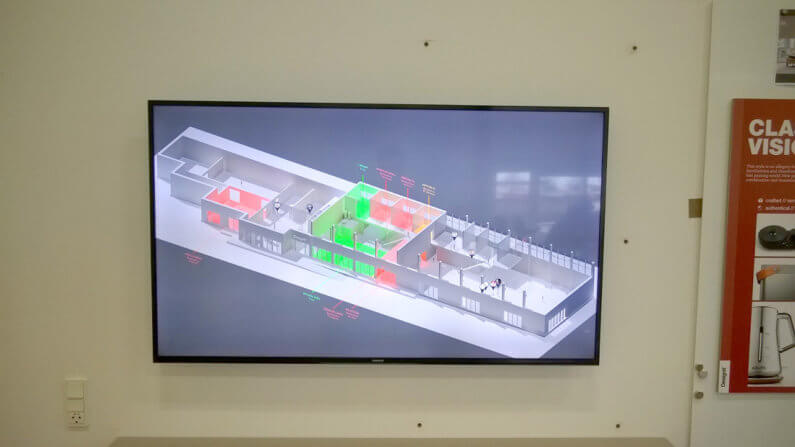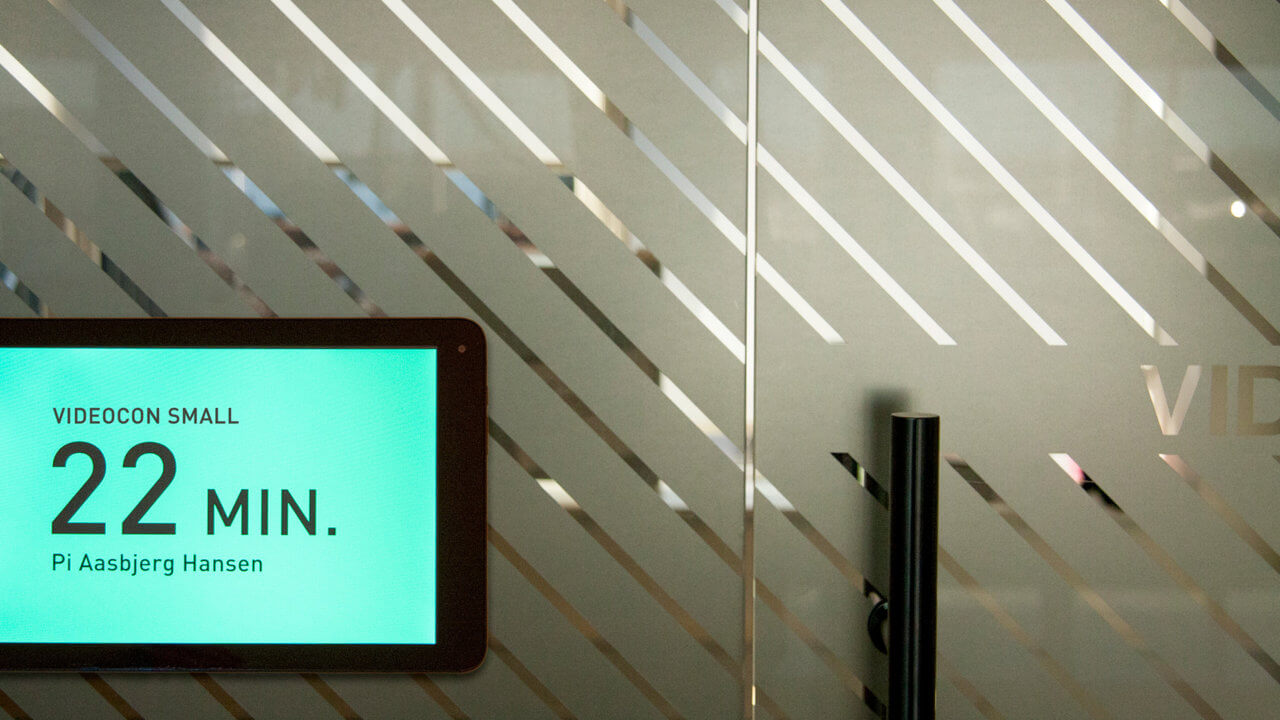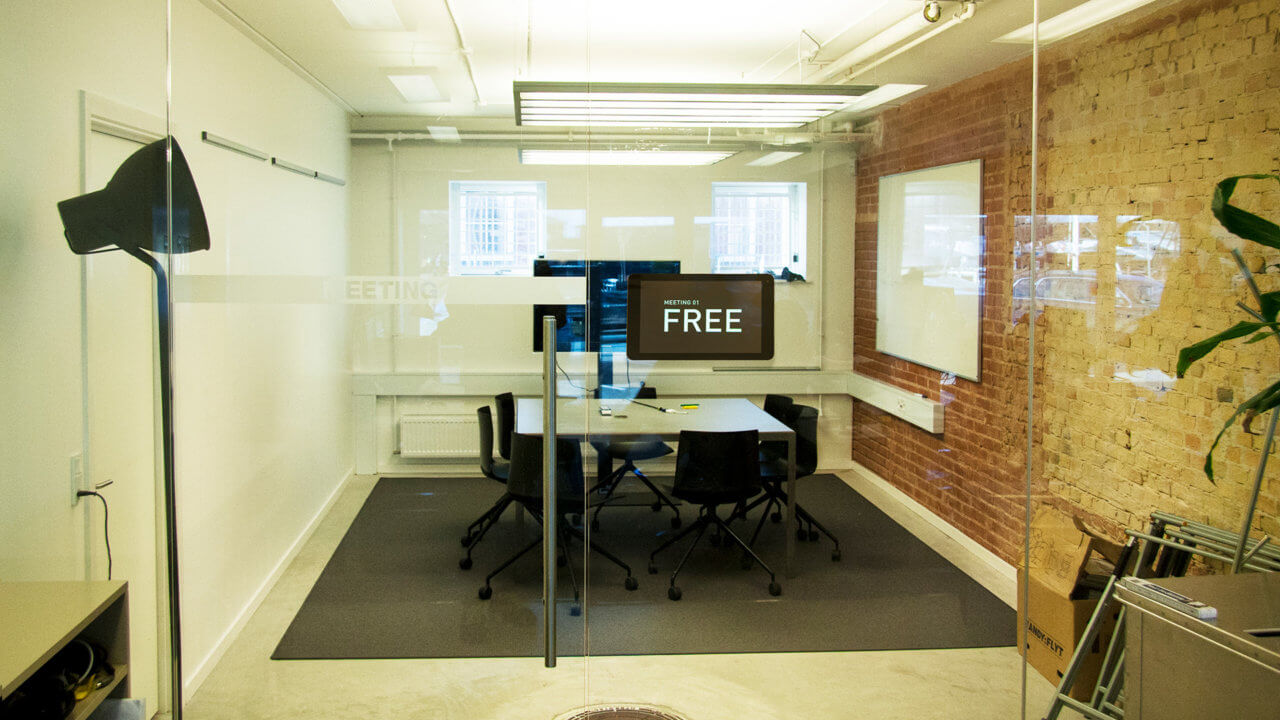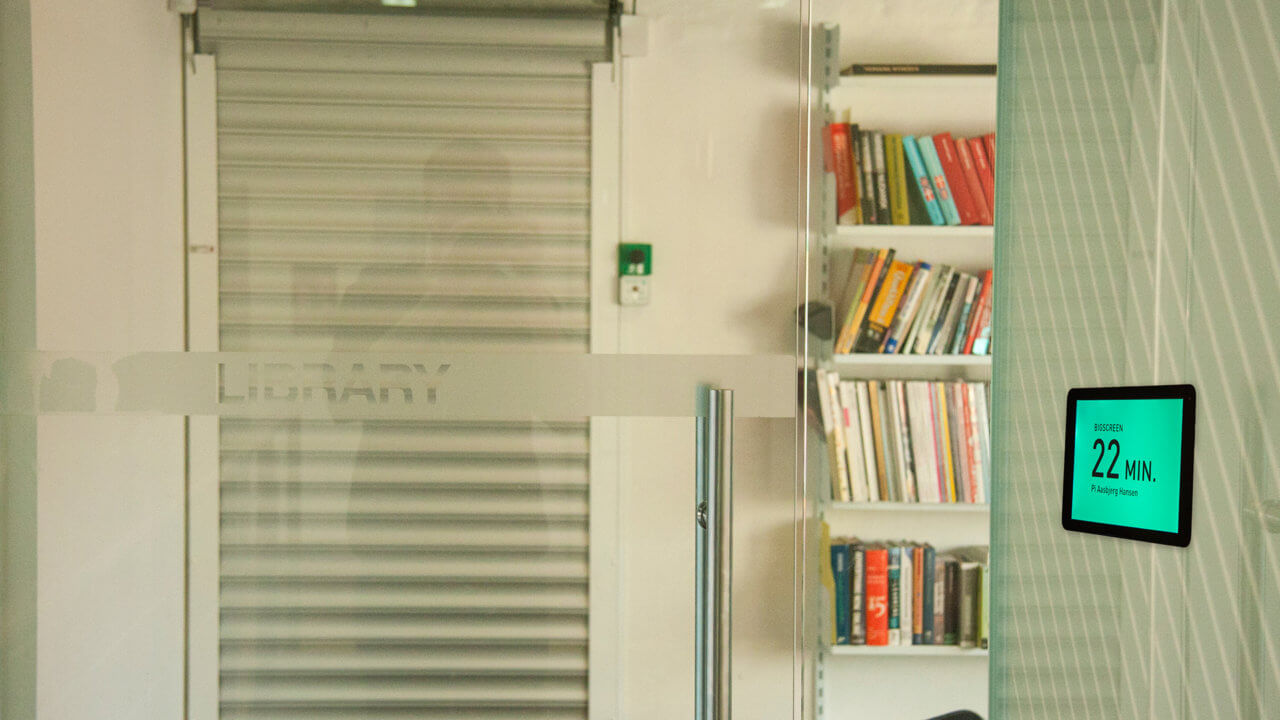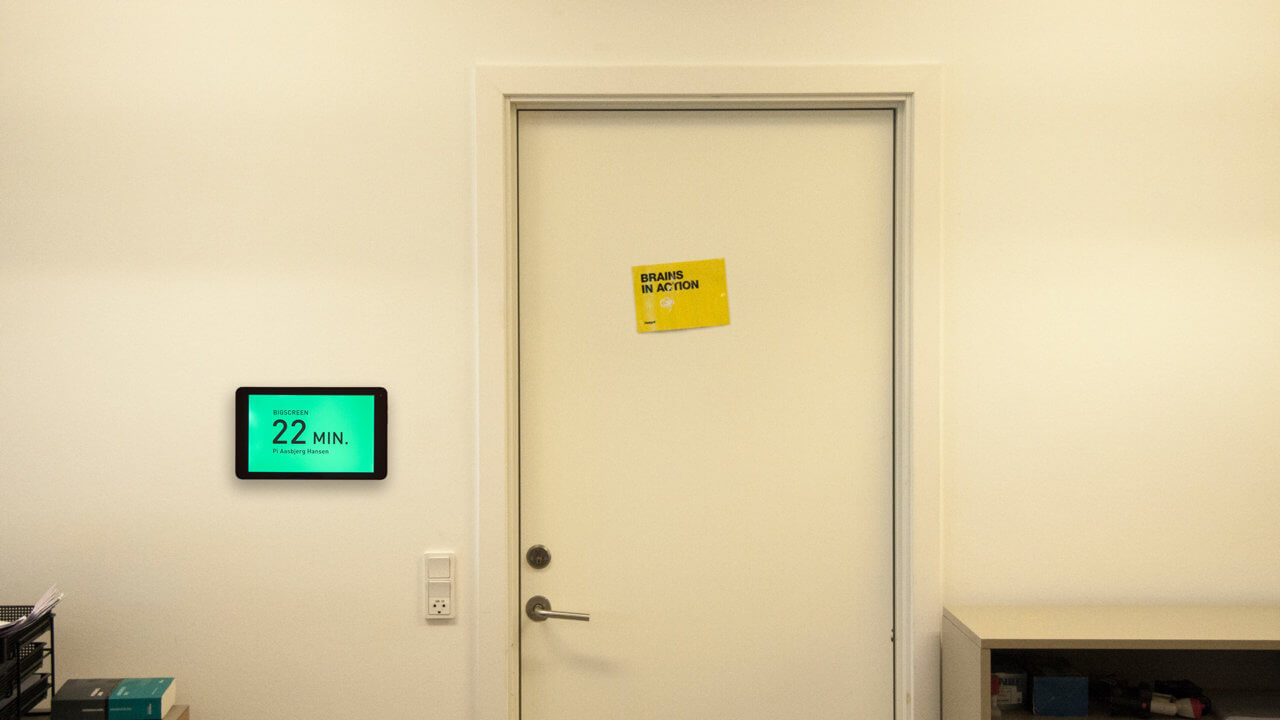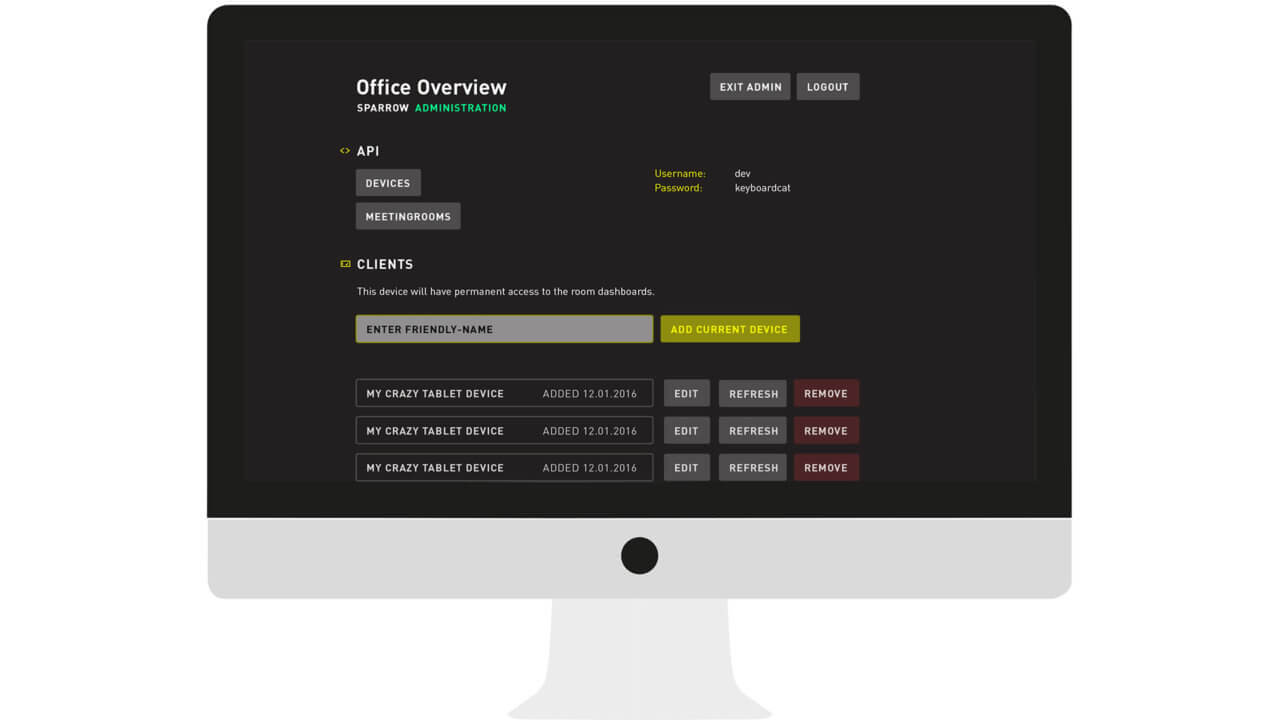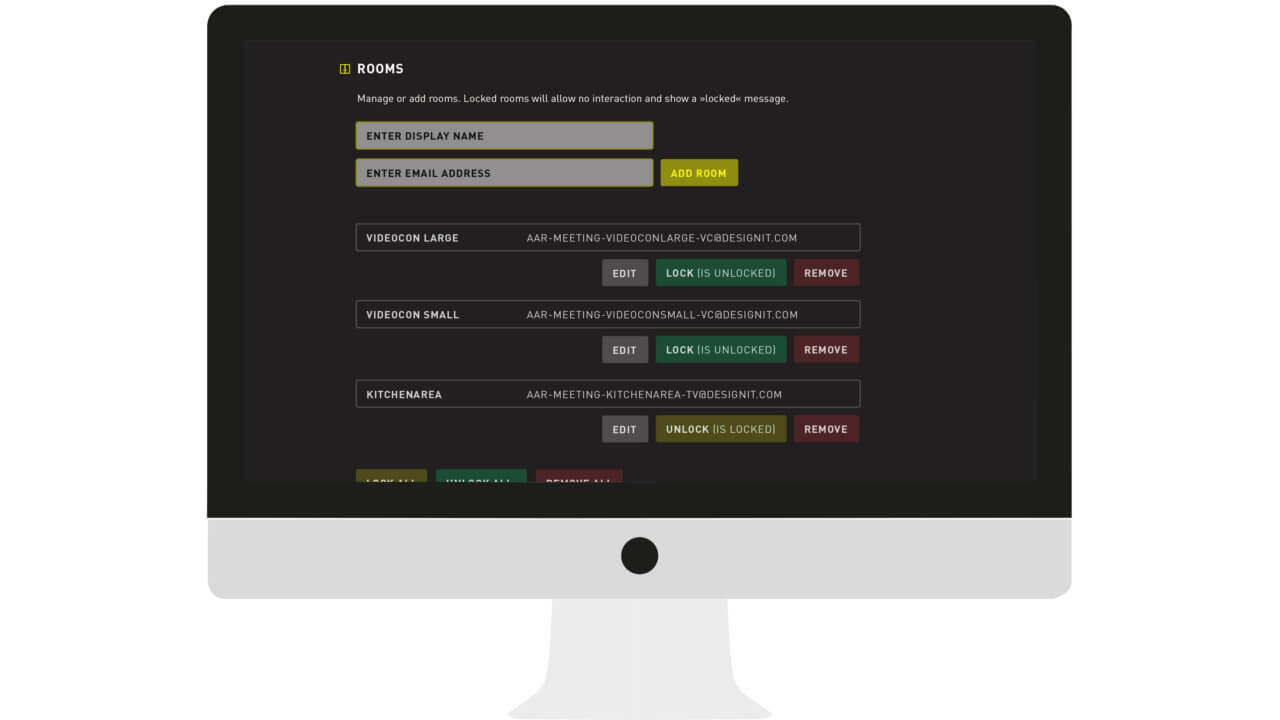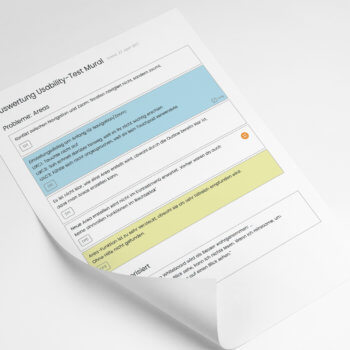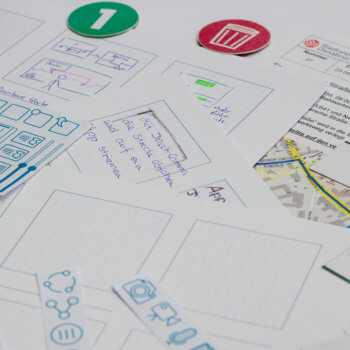Simply do meetings
Book conference rooms on the spot.
Project scope
During a six-month internship as Frontend Developer at Designit in Aarhus, Denmark, I have created Meetit as a permanent project, working on it when I wasn’t working to other projects.
Goal and idea of the project is to make short-term bookings of conference rooms a lot easier and also to create digital tools for a better overview of the office and current booking status of rooms.
The simple and intuitive system replaces the complex booking of meeting rooms inside of Microsoft Outlook by a device next to each room door. A conference room can now be booked on the spot directly from outside the room for short meetings. Additionally, the status of a room is visible directly from the door – no need to interrupt to check the next free time.
Project details
Areas of Work
Idea and concept. Implementation of multiple user interfaces for the system using HTML, JavaScript and CSS. Implementation of a NodeJS backend server. Design of backend UI. Integration with Microsoft REST API. Usage of the NoSQL database MongoDB. Implementation of a wrapper app for the webapp for Android tablets.
The system
A sophisticated NodeJS backend server highly reduces complexity for the user by managing availability checking and spontaneous booking of rooms for short meetings (and the ability to extend the booking period right from the room). The server speaks to Microsoft’s not so intuitive web APIs and delivers the status in an easy format for clients like the room tablets. Hence every meeting room should have a tablet device permanently mounted next to the door.
Those tablets are running a wrapper app under Android serving the user with a fullscreen version of a webapp that communicates with the backend server. The complexity of the processes is hidden by the simple app. This app is also delivered by a NodeJS server and heavily utilizes authenticated websocket connections right to the backend server.
A user should not need to care about the technical details at any time. The app feels like a native app and booking is done optimistically, i.e. the user directly gets the feedback that the room is booked, although in the background this process is still running. The system is resilient enough to make booking mostly successful. If for some reason booking is not possible, the display immediately shows this to the user and refreshes the status of the room.
Backend to manage the rooms
Personal conclusion
This project gave me the possibility to work on the idea of a frictionless booking system without deadlines or other requirements, whenever I had time to. It also feels good that this project could actually improve the daily workflow. Those circumstances led to a situation where I could experiment a lot to find the best solution available and therefore learn a ton of new things. Starting with the extensive use of websockets, continuing with responsive and quickly rendering web UIs, up to the deployment of NodeJS server applications, I was able to work on all aspects of the project.
3D-Overview of the conference rooms
